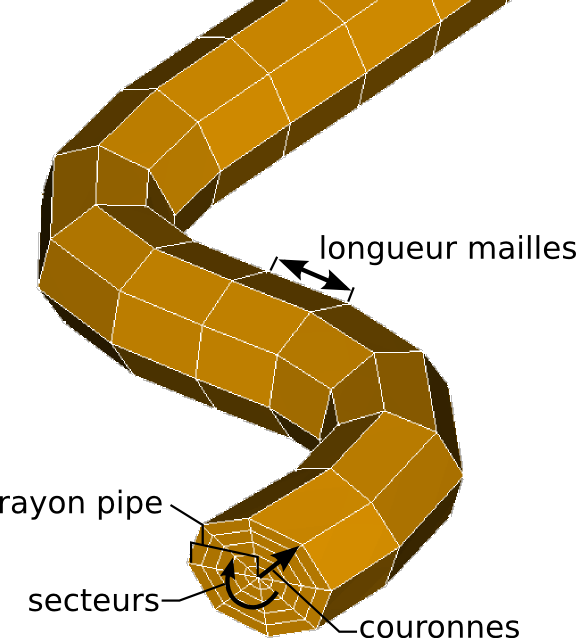With GUI¶
To make the use of « Bloc Fissure » easier, a Graphical User Interface (GUI) was developed. Inputs are similar to those of script mode. GUI is accessible in the SMESH extension Add a crack in a mesh
| GUI parameters | ||
|---|---|---|
| maillageSain | [string] ex: mesh/maillage.med | Relative address of the input structure 3D mesh in MED format (base is repertoire de travail) |
| FaceFissure | [string] ex: mesh/fissure.brep | Relative address of the input crack geometry in BREP format (base is repertoire de travail) |
| index edges fond fissure | [list of integers] ex: [1,2] | List of edges number which define the crack front |
| min | [float] ex: 1.00000 | Float defining the minimum size of elements to mesh the crack |
| max | [float] ex: 10.0000 | Float defining the maximum size of elements to mesh the crack |
| distance influence | [float] ex: 20.0000 | Length of influence - distance that defines the size of the extracted Box around the crack |
| rayon pipe | [float] ex: 5.00000 | Radius of the tore around the front |
| longueur mailles | [float] ex: 5.00000 | Length of the segments of the tore along crack front |
| couronnes | [integer] ex: 5 | Number of radial segment of the tore |
| secteurs | [integer] ex: 16 | Number of sectors of the tore |
| arete face fissure | [float] ex: 5.0000 | Mesh size of elements for the Box remeshing |
| repertoire de travail | [string] ex: /home/A123456 | Absolute address of the directory where files are saved |
| nom résultat | [string] ex: maillage_fissure | Name of the resulting mesh |
| mode | [choice] ex: verbose | Verbose mode for Salome messages |
- Reset: clears all the parameters
- Précédent: loads the last set of parameters used
- Recharger: loads a .dic file containing parameters
- Sauver: save a .dic file with the active parameters
- Cancel: exit GUI
- Sauver: Launch calculation

